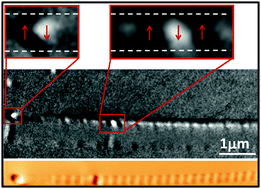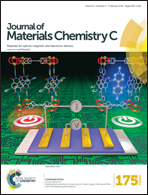Spin configuration of cylindrical bamboo-like magnetic nanowires
Abstract
The surface and the internal magnetic structure of bamboo-like cylindrical nanowires with tailored diameter modulations have been determined exploiting the direct photoemission and transmission contrasts using photoemission electron microscopy combined with X-ray magnetic circular dichroism, as well as complementary magnetic force microscopy and micromagnetic simulations. Bamboo-like cylindrical nanowires with diameters of 130 and 140 nm, and a modulation periodicity of 400 nm were electrochemically grown into the pores of alumina templates. FeCoCu and Co nanowires were selected to offer parallel and perpendicular magnetization easy axis, respectively. For FeCoCu nanowires, a main longitudinal magnetization configuration is found consistent with the predominant shape anisotropy. In addition, a weaker modulated contrast along the wires’ axis is observed that matches the position of each diameter modulation: vortex-like structures are observed at the ends of the wires and at the surface around the modulations. In Co nanowires, a multi-segmented vortex-like structure with alternating opposite chirality is found not matching the periodicity of the diameter modulations. Such a spin configuration is interpreted considering that Co nanowires exhibit hexagonal symmetry with c axis nearly perpendicular to the nanowires defining strong uniaxial transverse magnetocrystalline anisotropy.


 Please wait while we load your content...
Please wait while we load your content...